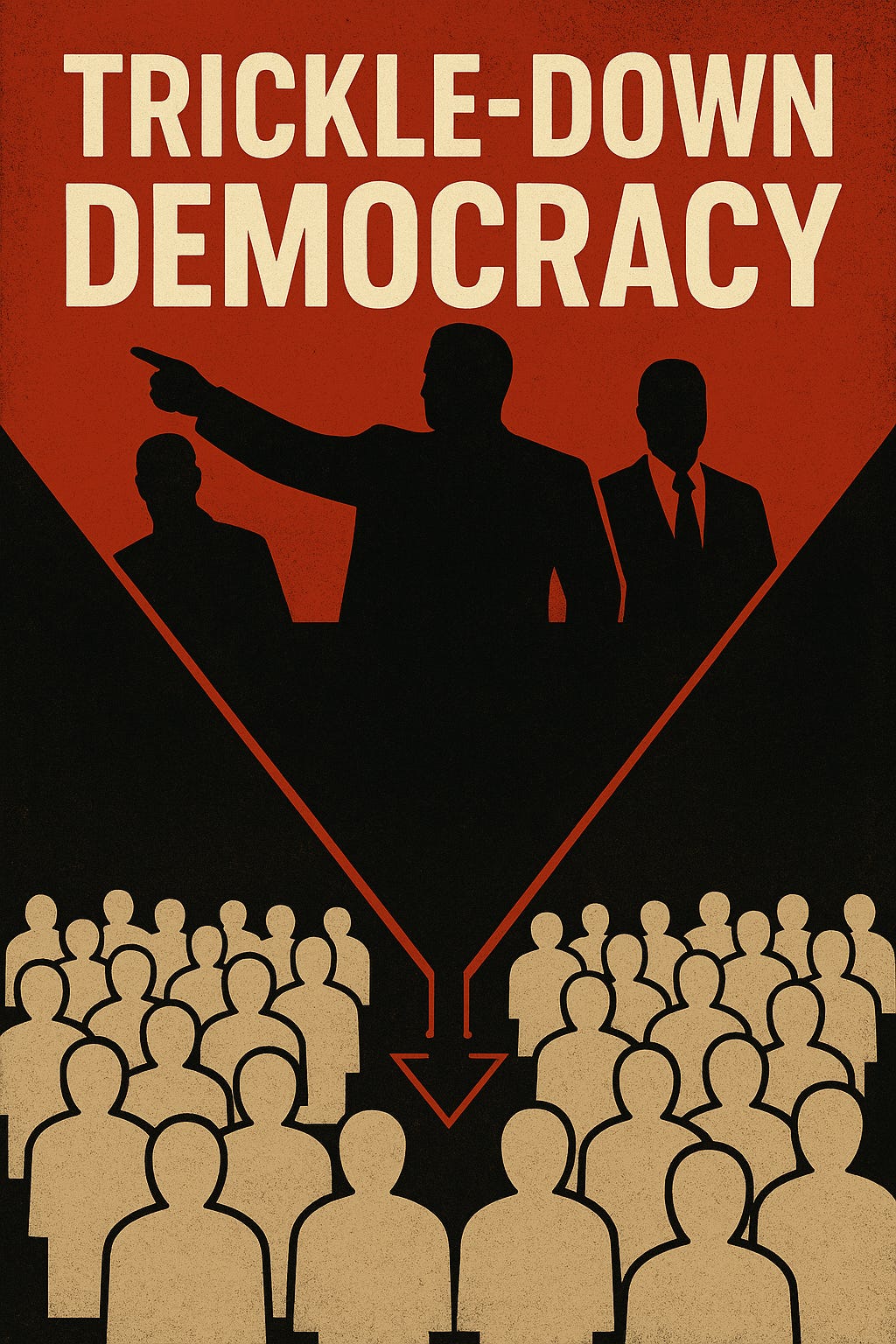Trickle-Down Democracy
Freedom and representation are being rationed, leaving citizens disillusioned and democracy hollow.
The United States once celebrated its elections as a triumph of democracy, a ritual of participation and voice.
In recent years, though, the process has come to resemble theater, with corporate donors and foreign interests as directors and the public cast as unwilling extras. The script is written before voters even arrive, and when they question the fu…
Keep reading with a 7-day free trial
Subscribe to Mesoscale News with Rebekah Jones to keep reading this post and get 7 days of free access to the full post archives.


